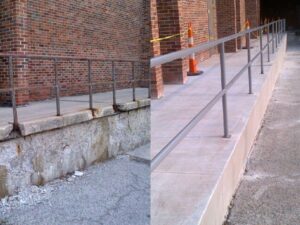Driving is a necessary part of each day for many people, and it isn’t uncommon for some to have to go back and forth multiple times in the space of a few hours. You’ve probably already encountered several occasions in which you’ve had to commute in bad weather. If these events have ever made you feel unsafe or nervous, just know that there are a few ways you could improve your skills at driving when things turn nasty.
Give Yourself More Time
Experienced drivers will know that it is a good idea to leave some distance between them and any cars in front of them. You need at least a few seconds to slow or stop your vehicle if the one in front of you has to brake unexpectedly. However, it is a good idea to increase this time and distance cushion if weather conditions are unfavorable. You may start to skid before you can come to a complete stop, and you’ll want to avoid the possibility of hitting anything in front of you if this happens.
Get Extra Traction
Some weather conditions can make it harder for your car or truck to stay planted securely on the road beneath you. When this becomes an issue, the vehicle may skid or even lift from the ground slightly, decreasing the traction and the level of control you have. You can help alleviate this problem by installing Nissan tires with good treads and traction. Some of these tires are made to help keep your car grounded when rain or snow is falling. Keeping the vehicle stable can give you more control if you do start to slide or skid and need to correct your course quickly.
Use Wipers
Rain, snow, sleet, or hail will all lower the visibility you have when you are driving. If any of these conditions are particularly heavy, they can even make it difficult to see directly in front of you. To mitigate this issue, you should learn how to employ your wipers. Most windshield wipers have a few speed settings from which you can choose. Pick the one that can deal with the elements that are obscuring your front screen, improve your visibility, and give you a better chance at reacting to issues on the road.
Switch Your Headlights
In normal conditions, your headlights are probably set to a high-beam mode to provide you with maximum illumination on the road at night. However, this mode can cause the light to reflect in poor weather such as fog. If you switch to low-beams, you may improve your visibility on the road ahead. Another bonus here is that you’re more visible to other drivers.
Bad weather conditions are things that you might see coming for a while before they happen. However, they can also sneak up on you before you’ve even realized what is happening. In either case, knowing how to respond to different issues can boost your confidence, awareness, and overall safety as you’re controlling your vehicle. While avoiding bad weather is prudent, you can use some of these tips to help yourself when that just isn’t a possibility.

